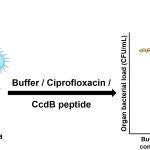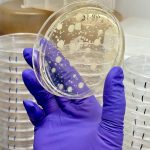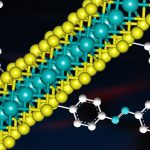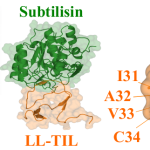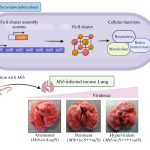
Antimicrobial agents are commonly used in agriculture, animal husbandry, and healthcare to target microbial pathogens. However, the indiscriminate use of such agents has caused a significant rise in several bacteria developing resistance, leading to a worldwide crisis causing millions of deaths each year.
Detecting antibiotic-resistant pathogens is a key step in tackling this problem. Most diagnostic strategies rely on culture-based techniques which can be time-consuming. A recent study from the Department of Biochemistry, IISc aims to shorten this time lag by using fluorescence-based diagnosis of antibiotic susceptibility in pathogens. This interdisciplinary study was done primarily by Ashim Dubey, an undergraduate student in Dipankar Nandi’s lab, IISc, along with members from Sobhan Sen’s laboratory at the School of Physical Sciences, Jawaharlal Nehru University (JNU) and Pradeep Bulagonda’s AMR laboratory at the Satya Sai Institute of Higher Learning, Puttaparthi.
The team developed an assay to differentiate between antibiotic-resistant and antibiotic-sensitive bacteria in a population, based on dynamics of the bacterial membrane. Treatment of bacteria with bactericidal antibiotics often leads to the release of reactive oxygen species (ROS) that causes changes in the bacterial membrane.
The authors quantified these membrane changes in response to antibiotic treatment, using two 4-aminophthalimide (4AP)-based fluorescent dyes, 4AP-C9 and 4AP-C13, synthesised by Sen’s research group in JNU. Under normal conditions, these dye molecules penetrate the membrane and reside at different depths. However, when the membrane is damaged due to effects of antibiotics, the dye molecules settle in at a similar depth. Thus, the difference in the fluorescence emitted by these dyes in a bacteria grown in the absence or presence of antibiotics can act as a marker to differentiate between sensitive and resistant bacteria.
The study opens a promising avenue for quick and sensitive detection of antibiotic-resistant pathogens with high accuracy.


